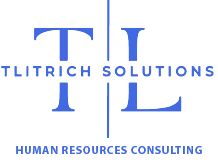Diversity, Equity, and Inclusion (DEI) has become a crucial focus in workplaces across industries. At its core, DEI aims to create an environment where individuals from all backgrounds feel valued, respected, and have equitable opportunities for success. However, despite its importance, DEI has faced increasing scrutiny in recent years. Some see it as essential for fostering innovation and employee engagement, while others argue that certain DEI initiatives create division or prioritize some groups over others.
What Is DEI?
DEI stands for:
- Diversity – Acknowledging and embracing the differences in identities, experiences, and perspectives within a workforce. This includes race, gender, age, sexual orientation, disability, socioeconomic status, and more.
- Equity – Ensuring fair access to opportunities and resources, recognizing that individuals may need different levels of support to succeed.
- Inclusion – Creating a culture where all employees feel respected, heard, and empowered to contribute. Inclusion ensures that diverse voices are not just present but actively engaged in decision-making.
Why Is DEI Under Scrutiny?
Despite its well-intentioned goals, DEI programs have been met with criticism and legal challenges. Some key reasons include:
- Political and Legal Challenges – Some states have introduced laws restricting DEI programs in education and the workplace, arguing they promote preferential treatment or violate anti-discrimination laws.
- Perceptions of Reverse Discrimination – Some employees feel that DEI programs unfairly favor underrepresented groups, leading to tensions around hiring, promotions, and workplace policies.
- Effectiveness Concerns – Critics argue that some DEI initiatives are performative or fail to achieve meaningful change. Without clear goals and accountability, these efforts may not drive lasting impact.
- Economic Pressures – As companies face budget constraints, some have scaled back DEI initiatives, questioning their return on investment and prioritizing other business functions.
What Does DEI Look Like in Practice?
Effective DEI initiatives go beyond buzzwords and checkboxes—they create real opportunities and foster inclusive workplaces. Here are some tangible examples:
- Diverse Hiring Practices – Implementing blind resume reviews, diverse hiring panels, and outreach to underrepresented talent pools.
- Pay Equity Audits – Regularly analyzing salaries to identify and address wage disparities.
- Employee Resource Groups (ERGs) – Supporting affinity groups where employees can connect and advocate for shared interests (e.g., Women in Leadership, LGBTQ+ Network, Black Employee Network).
- Bias Training – Offering workshops on unconscious bias, microaggressions, and inclusive leadership.
- Flexible Work Policies – Providing accommodations for employees with disabilities, caregivers, and those with different work-life balance needs.
- Supplier Diversity Programs – Partnering with minority-owned, women-owned, and small businesses.
- Clear Reporting and Accountability – Setting measurable DEI goals and tracking progress transparently.
Moving Forward with DEI
While DEI remains a topic of debate, its core mission—creating fair and inclusive workplaces—remains vital. Organizations that approach DEI with transparency, measurable actions, and a focus on business and employee well-being will be better positioned to navigate the challenges and reap the benefits of a truly inclusive workforce.
If you’re looking to refine your approach to DEI, contact TLitrich Solutions to start the conversation.
